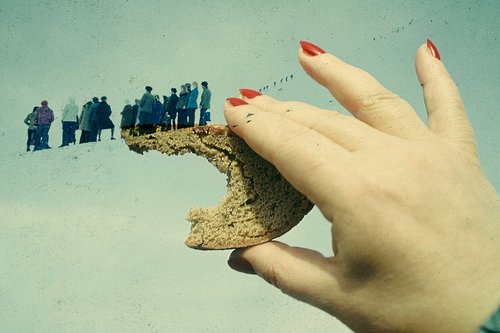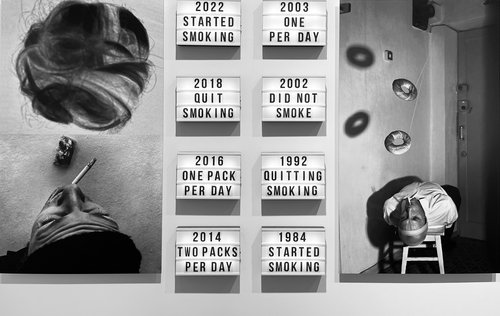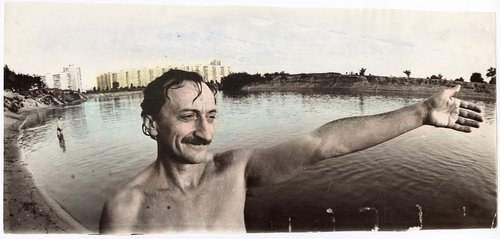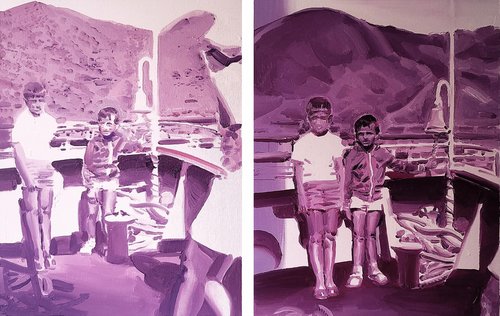Sergey Bratkov, ‘In the Eye of the Beholder’

Sergiy Bratkov. My Brother's Cats. Exhibtion view. Magdeburg, 2024. Photo by Hans-Wulf Kunze. Courtesy of Kunstmuseum Magdeburg
The Kunstmuseum Magdeburg is hosting Sergey Bratkov’s first solo show since his move to Germany in mid 2022 and it serves as a showcase for this Ukrainian artist’s most recent work.
The Kunstmuseum in Magdeburg, the capital of Saxony-Anhalt, is housed in what was once a mediaeval convent. The ‘Kloster unser lieben Frauen’ (Convent of Our Lady) miraculously emerged from the devastation of Second World War bombings largely intact. After some repairs and reconstruction, the building was secularized, serving multiple purposes until 1975, when a concert hall was opened in the 12th century church. Later, in 1989 the current museum was set up in adjoining buildings. The fact that windows and much of the original décor was lost or destroyed meant that contemporary artists were able to bring additions to the original Romanesque interiors. The church floor is now a mosaic by the German artist Martin Assig (b. 1959), while the windows of the museum are protected by mirror shutters designed by Berlin-based art and architecture studio reality:united.
Today Magdeburg’s peaceful views of the River Elbe, where historically and not so long ago there were war-torn scenes of destruction are a telling reminder of how easily the façade of normality which we take for granted can evaporate. Something poignantly underlined by recent events in Europe and elsewhere in this turbulent world.
Sergey (Sergiy) Bratkov’s own trajectory is a good example. Born in 1960 in Kharkiv, Ukraine, then part of the USSR, Bratkov has been a member of the so-called Kharkiv School of Photography since 1984. This term is loosely applied to the local underground scene, where experiment, mixed media, camp and controversy were the language of choice. Bratkov went on to join the Gosprom (1987-88) group and was also a painter in the local Litera A artistic group (1986-1991). In the early 1990s, concentrating increasingly on photography, he opened Up/Down, a non-profit gallery, in 1993. That same year, he and the pioneering Kharkiv artist Boris Mikhailov (b. 1938) formed the Quick Reaction Group along with Serhii Solonsky (b. 1957). Sixteen years of work in various media established Bratkov as a significant figure on the Kharkiv artistic scene. Unsurprisingly, he soon became a distinguished part of the Moscow scene having moved there in 1990.
By then, Bratkov was also exhibiting around the world. He represented both Russia and Ukraine in national pavilions at the Venice Biennale in 2003 and 2007, respectively, in addition to many other important venues. He also taught at the Rodchenko School of Photography in Moscow.
Bratkov’s life changed drastically when the armed hostilities in Ukraine started in 2022. Russian-speaking and with a Ukrainian passport, he emigrated once more. He had previously been represented by the Volker Diehl gallery in Berlin, so he went on to do a show there in 2022 and he has since taken part in a number of group exhibitions, notably the massive ‘Kaleidoscope of (Hi)stories’ that was mounted in the Albertinum in Dresden in 2023.
His current solo show in Magdeburg is the much-anticipated latest step in the relaunch of Bratkov’s European career. Curated by Dr. Annegret Laabs, it takes up three halls in a display of video, photography, paintings, and objects.
Bratkov explains: “Annegret planned to make an exhibition of photo and video works created at different times in Ukraine. And I gave her the works I have been making in Germany over the past two years. They are going to publish a catalogue, and I did not want it to be only of my older works from my previous museum exhibitions. So, she came to my studio to see the works and liked them.”
He continues: “This space is quite special. There is a long corridor divided by partitions so you get a free flow from one hall to the next. I wanted you to turn around a corner and see something completely different, turn again and see something different again.”
In the first hall you find Bratkov’s video ‘My Brother’s Cats’ along with several photographic works that flank the door or are scattered around on the walls, some are even standing on the floor. The room has been transformed into a strange psychedelic portal linked to present day Kharkiv. The video, filmed in Kharkiv, is in Bratkov’s characteristic deadpan style. Furry cats adorned with Christmas decorations sit or play on the tailpieces of Russian missiles embedded in the soil. Post-internet kitsch it might be, but it is also terrifyingly grim.
Bratkov describes how it was created: “Last year I went on a trip to Kharkiv where my brother still lives in our parents' house near Kharkiv. His kids went away, leaving him with the cats who like to sit on the fragments of Smerches left after the first days of the hostilities, it’s hard to get them out of the ground. I decorated the cats with bows so they wouldn't look sad.” At the centre of the second room there is a lightbox showing an industrial-looking photograph titled ‘Gosprom’ (1987). On the walls are a series of large-format monochrome works, almost abstract black-and-white photographic prints on canvas overlaid with acrylics reminiscent of Gerhard Richter's famous Birkenau series, where he took black-and-white images from a concentration camp as his source and overlaid them with paint until all the original sources identifying the images had disappeared. Yet Bratkov draws his inspiration from a different starting point:
“Not from Richter, more like the kind of overpainted photos I did in the 80s. And large-scale prints in my ‘We Are Not Here’ exhibition in 2018. Now the process is not over-painting but negating in gray and black the time in the past when these photos were taken.”
He had planned to start the work back in Moscow, but he did not find the kind of material he needed. So, when he came to Germany, the first thing he did was find a workshop in Frankfurt. “I did a dozen works in two months.”
The last hall shows a recent series he worked on earlier this year called, ‘Important Words’, a set of paintings and objects made from different words. Bland-looking surfaces feature expressions in Ukrainian that are understandable with the help of the news context: zrada (treason), pidzemni shkoli (underground schools), timchasovo (temporary). Bratkov says they are “important words that have now entered the vocabulary of ordinary people since the beginning of the hostilities. These works are also a tribute to the Kharkiv-born avant-garde artist Vasily Yermilov (1894-1968), who often used text in his work. They are like posters and the large size and colour and font seem to have their own energy. For the first time in my life I turned to the Ukrainian language, I felt its unique poetry and imagery”.




















